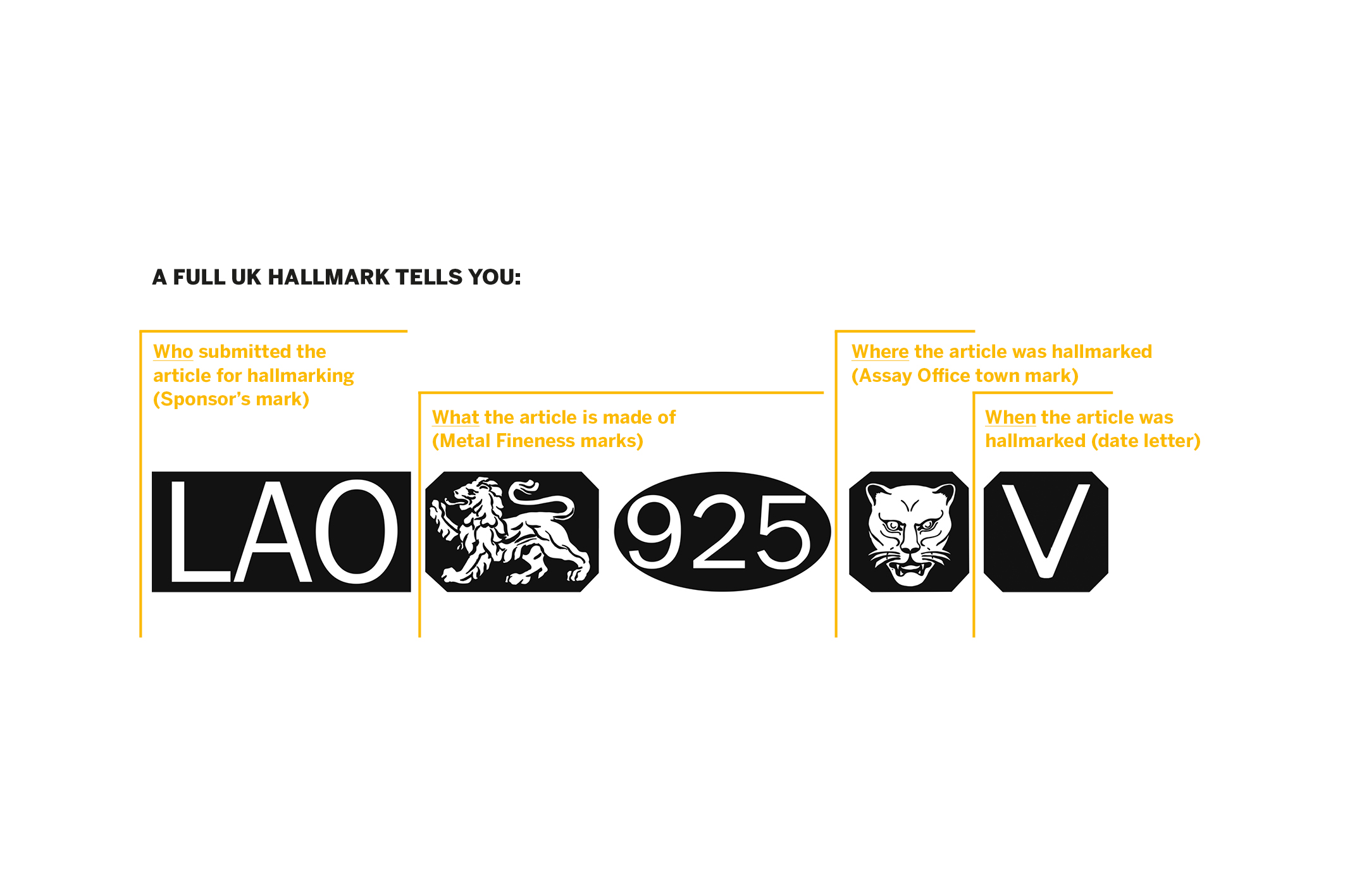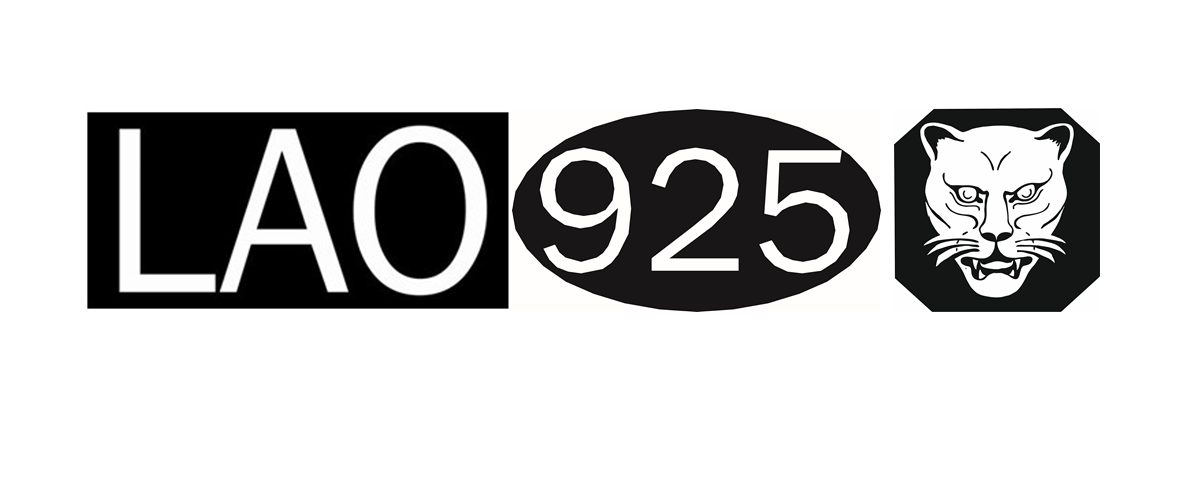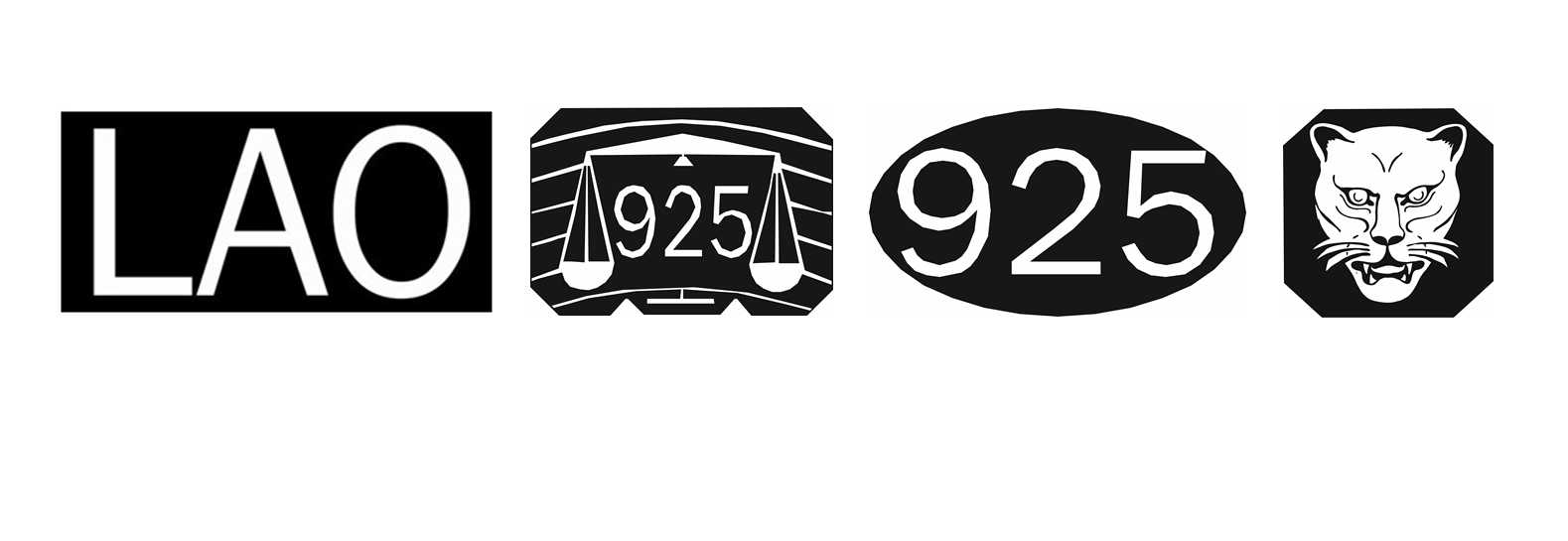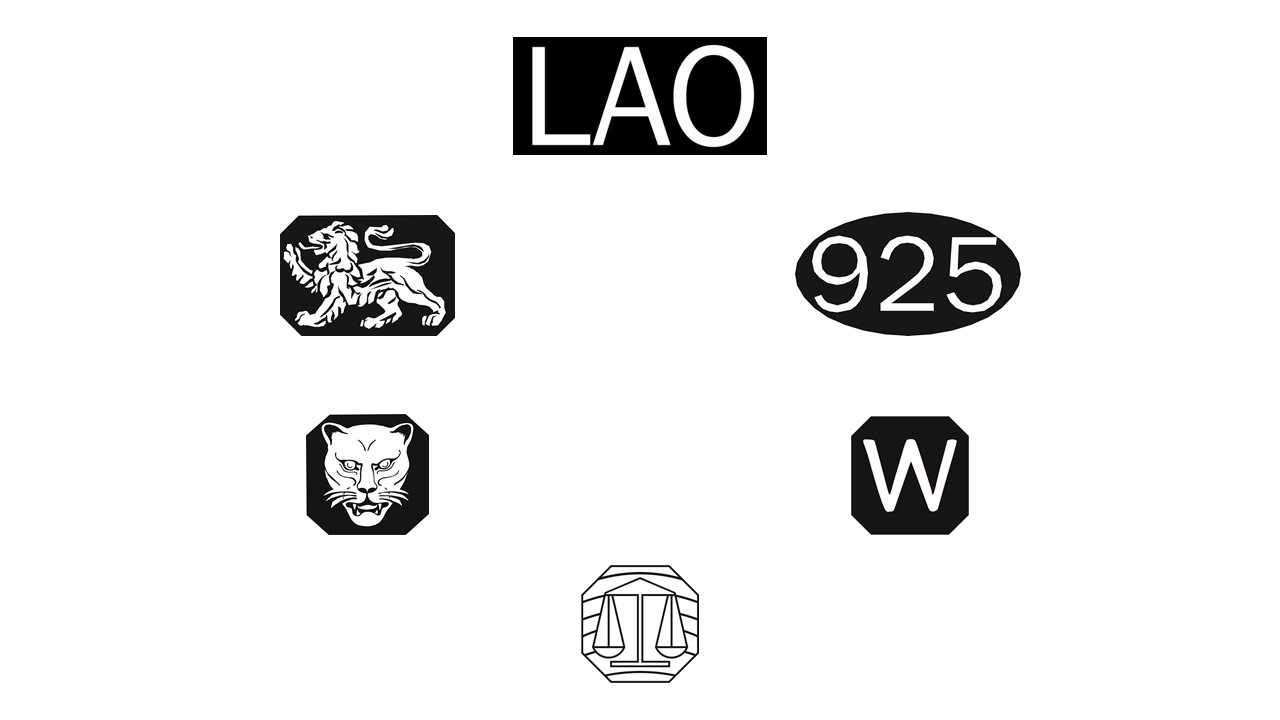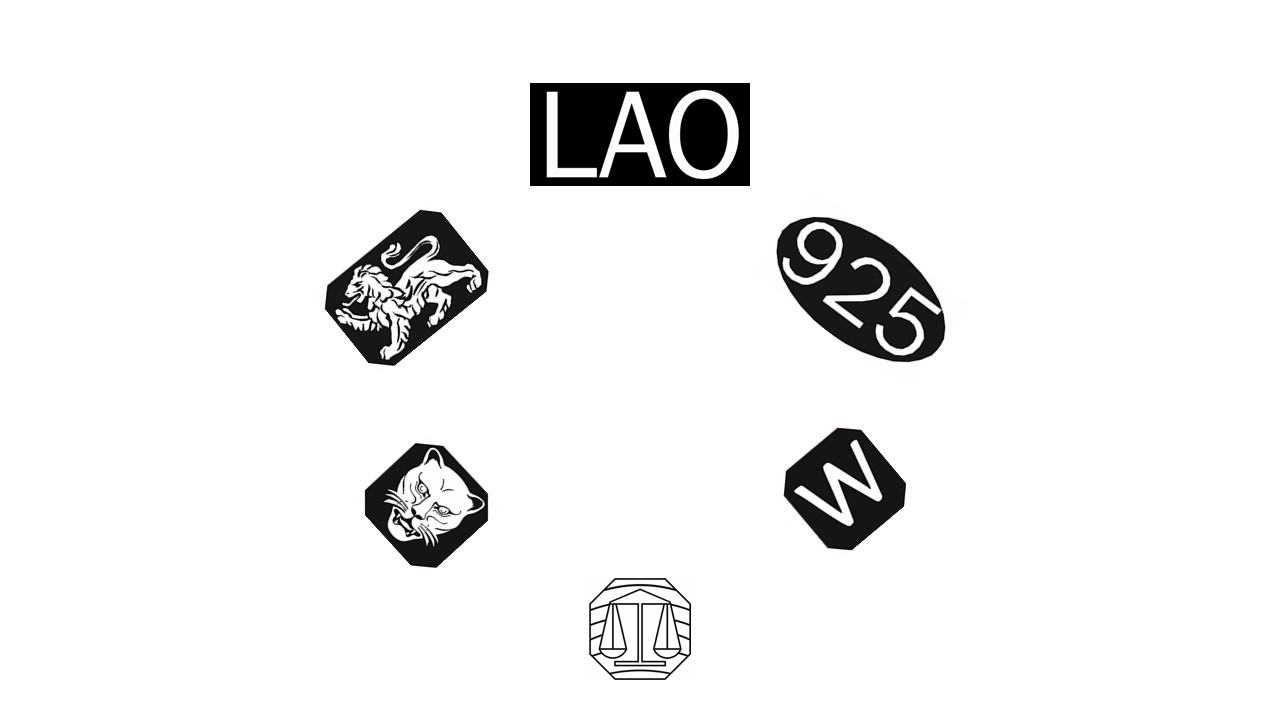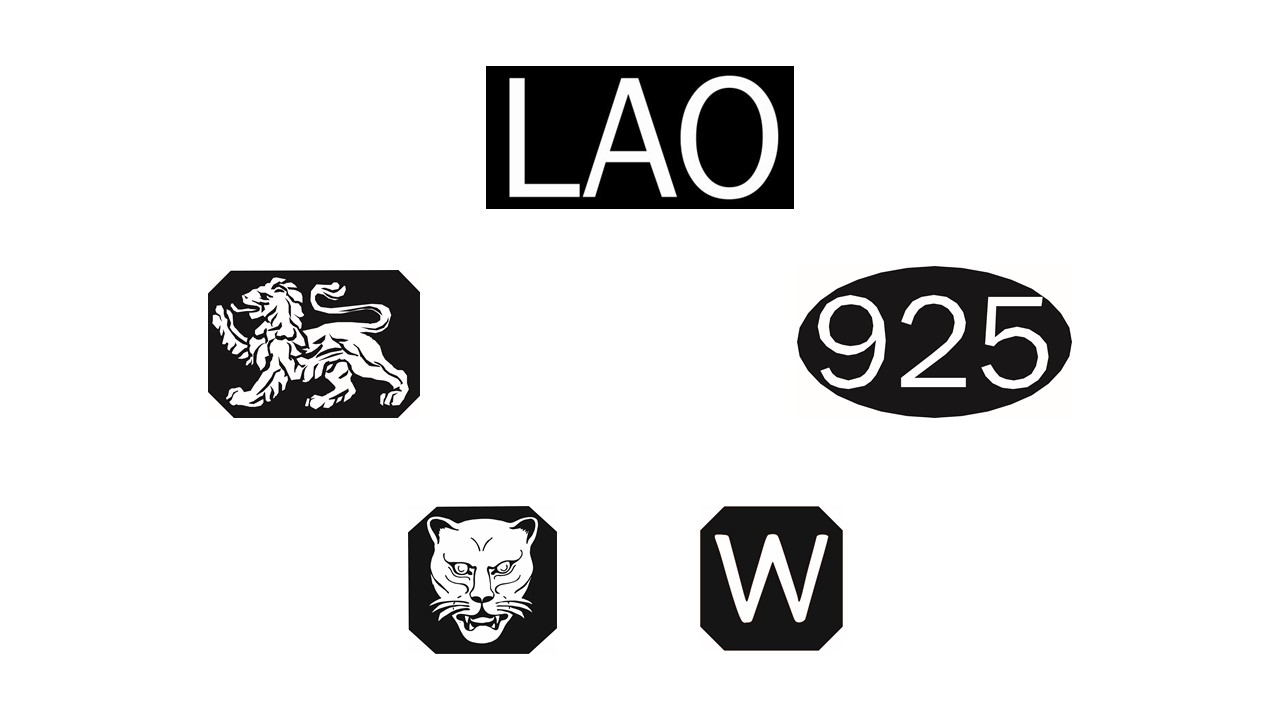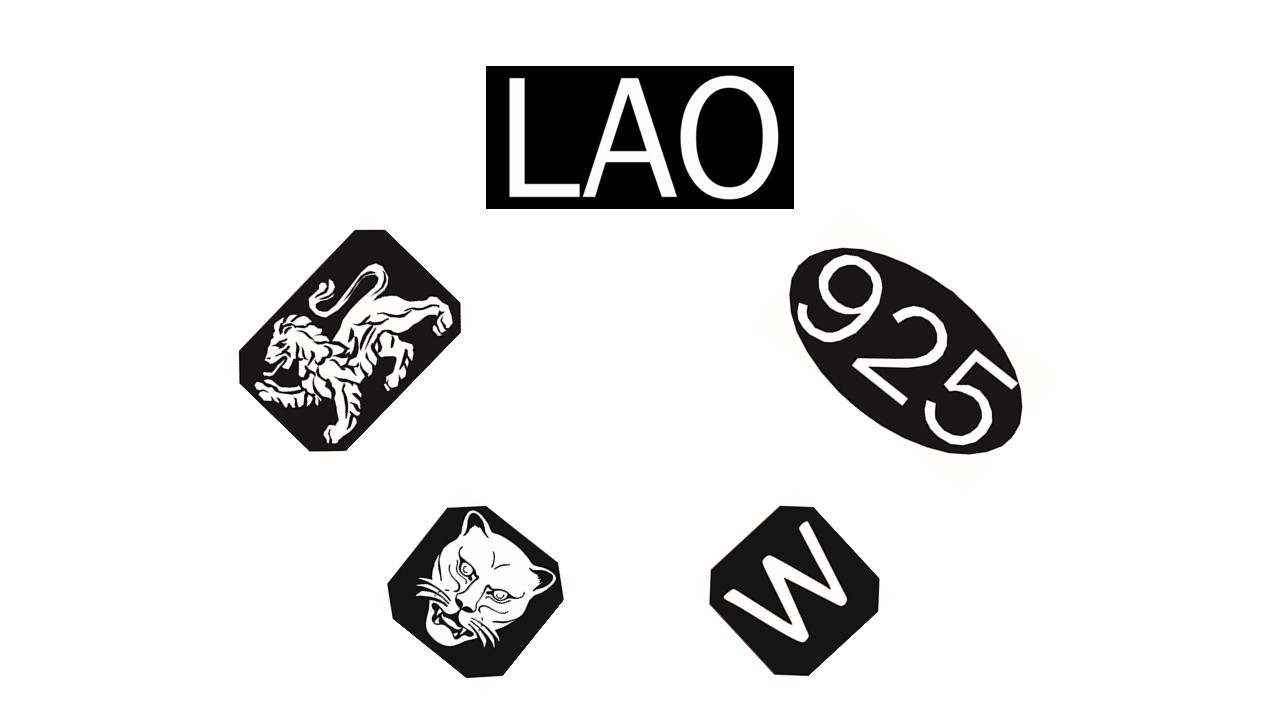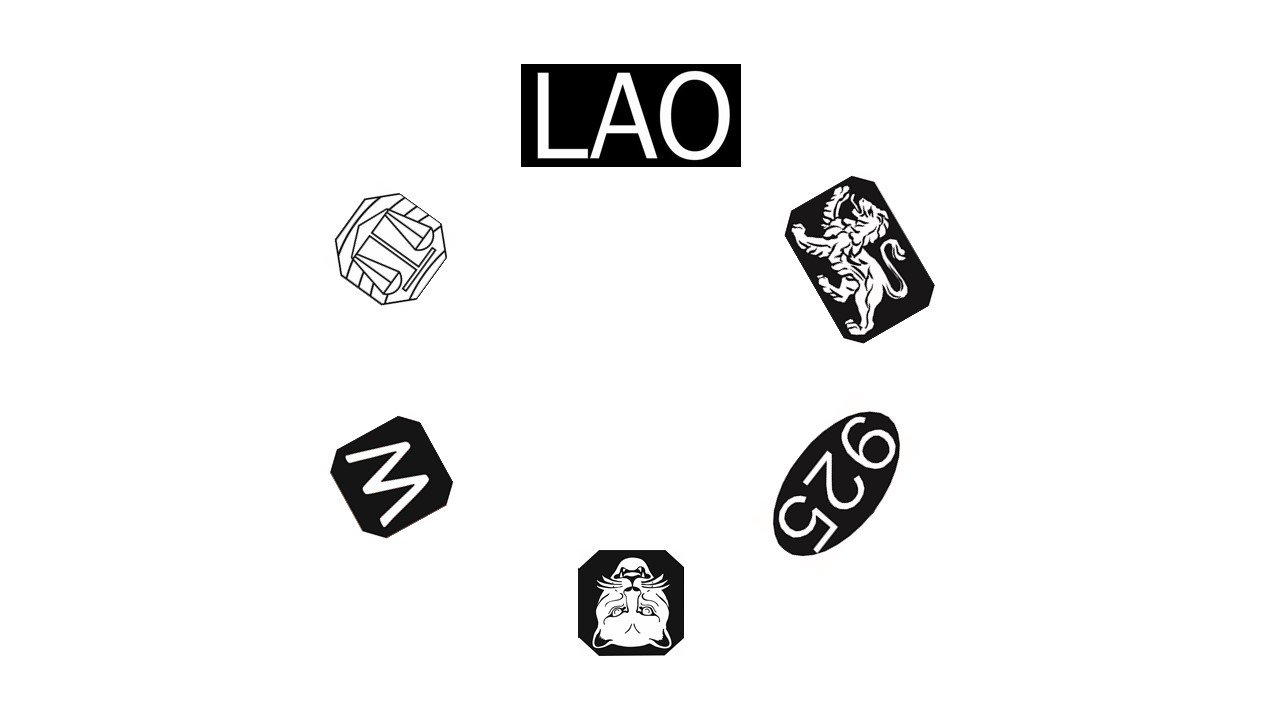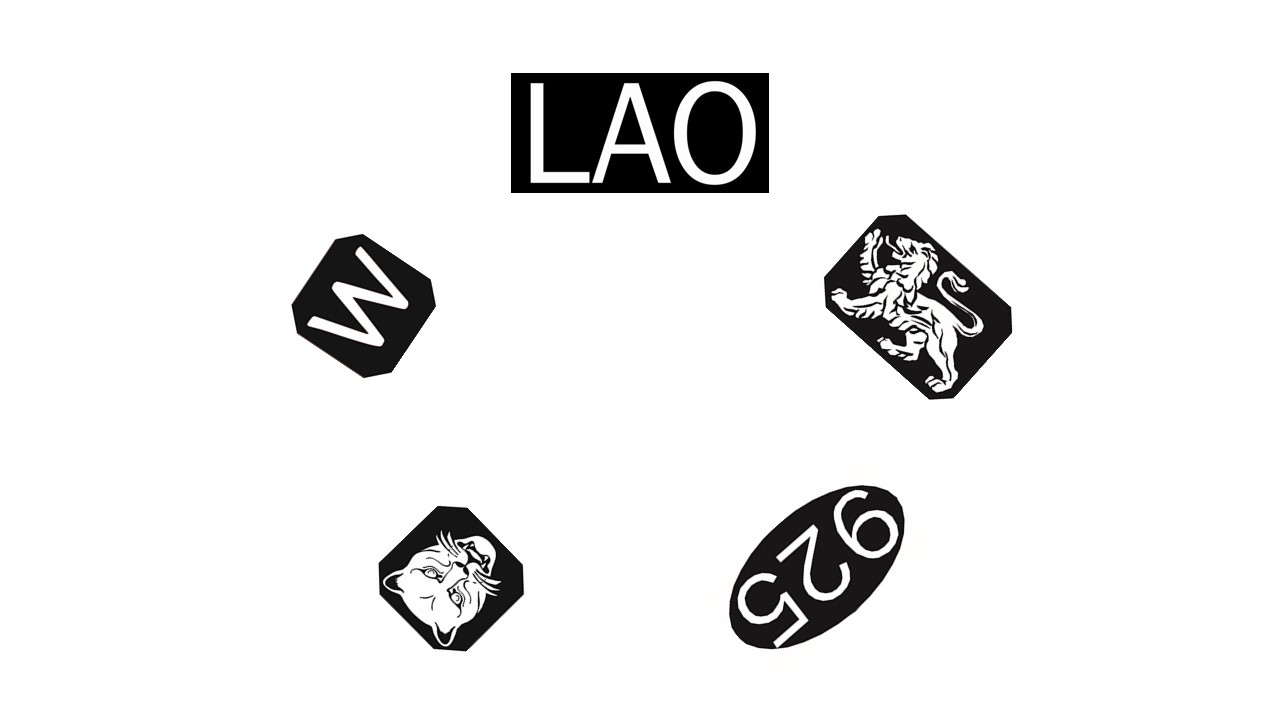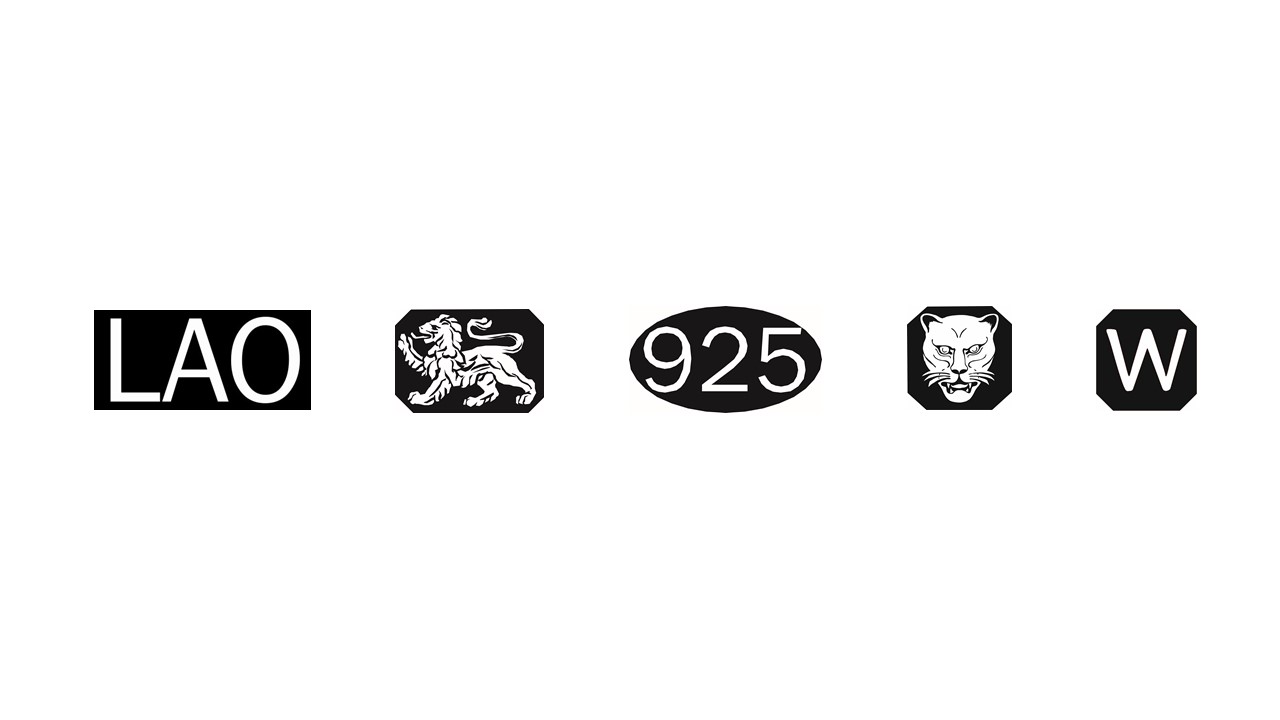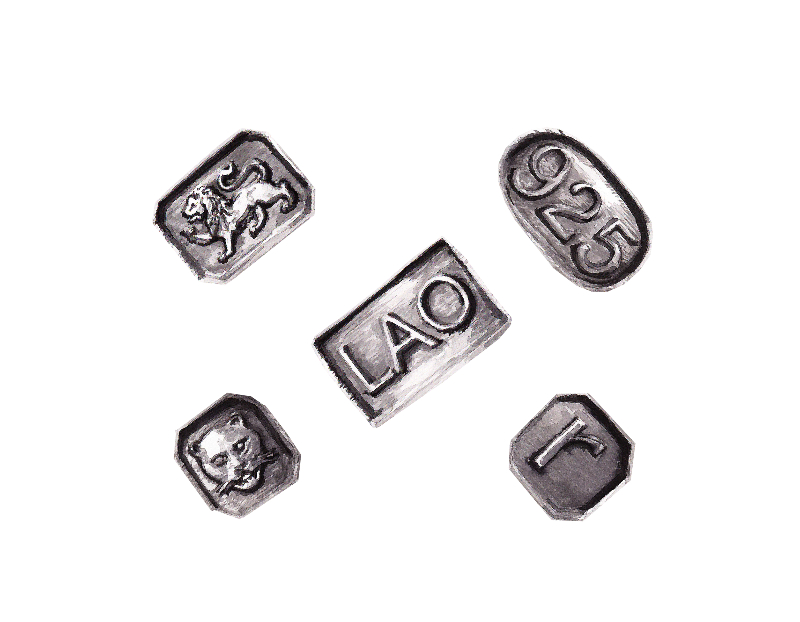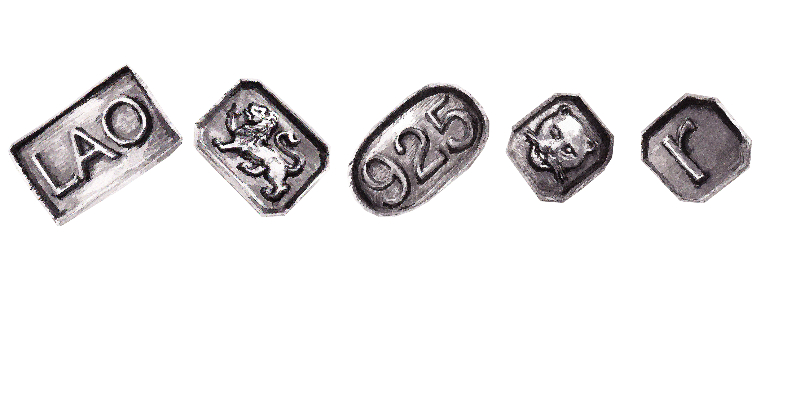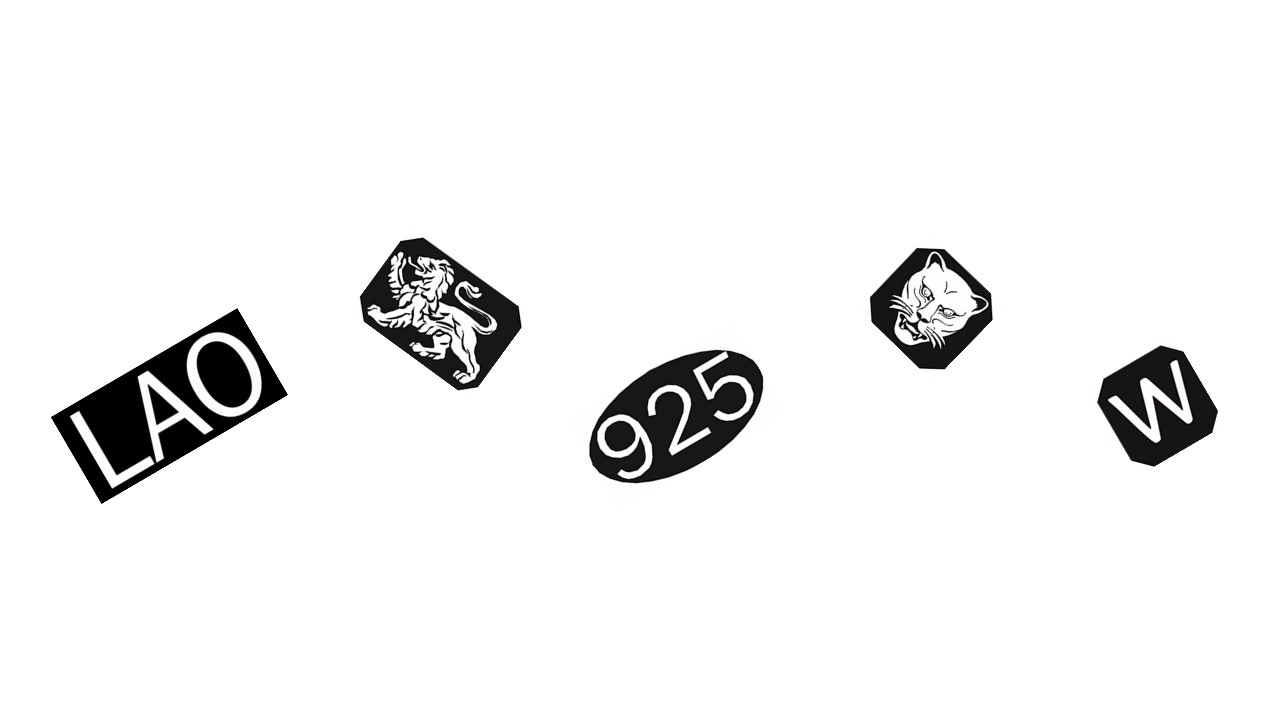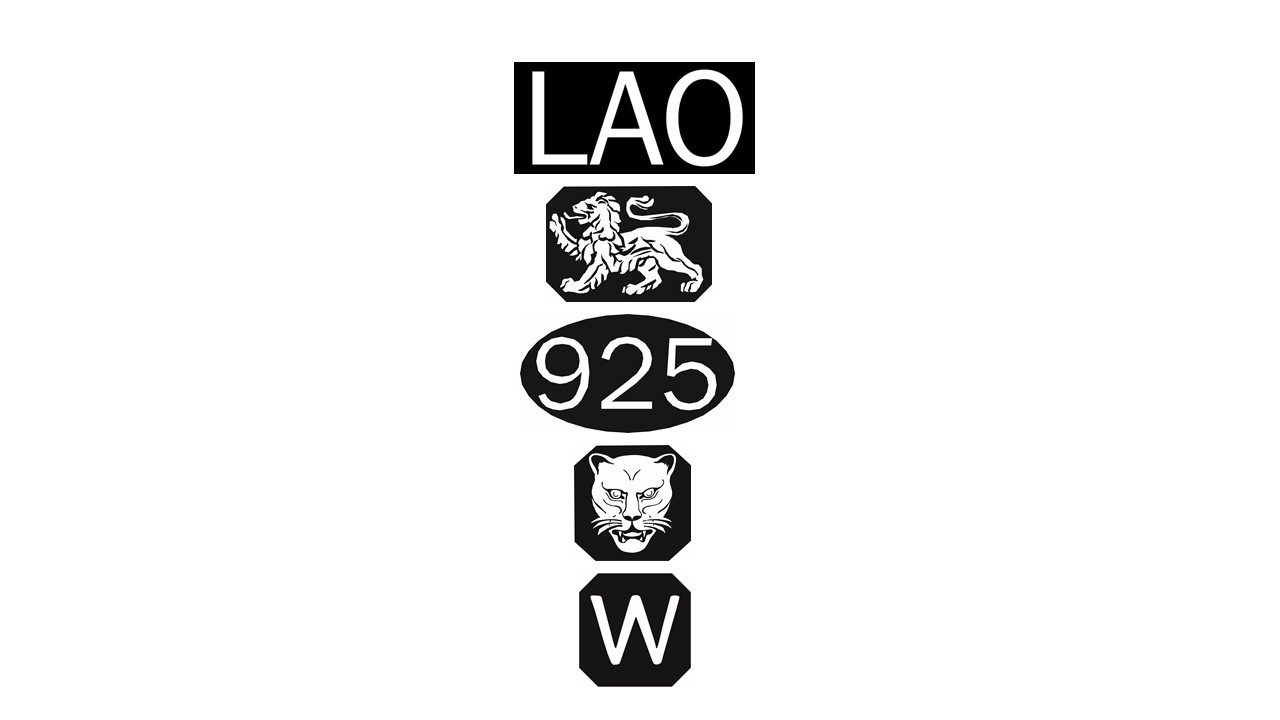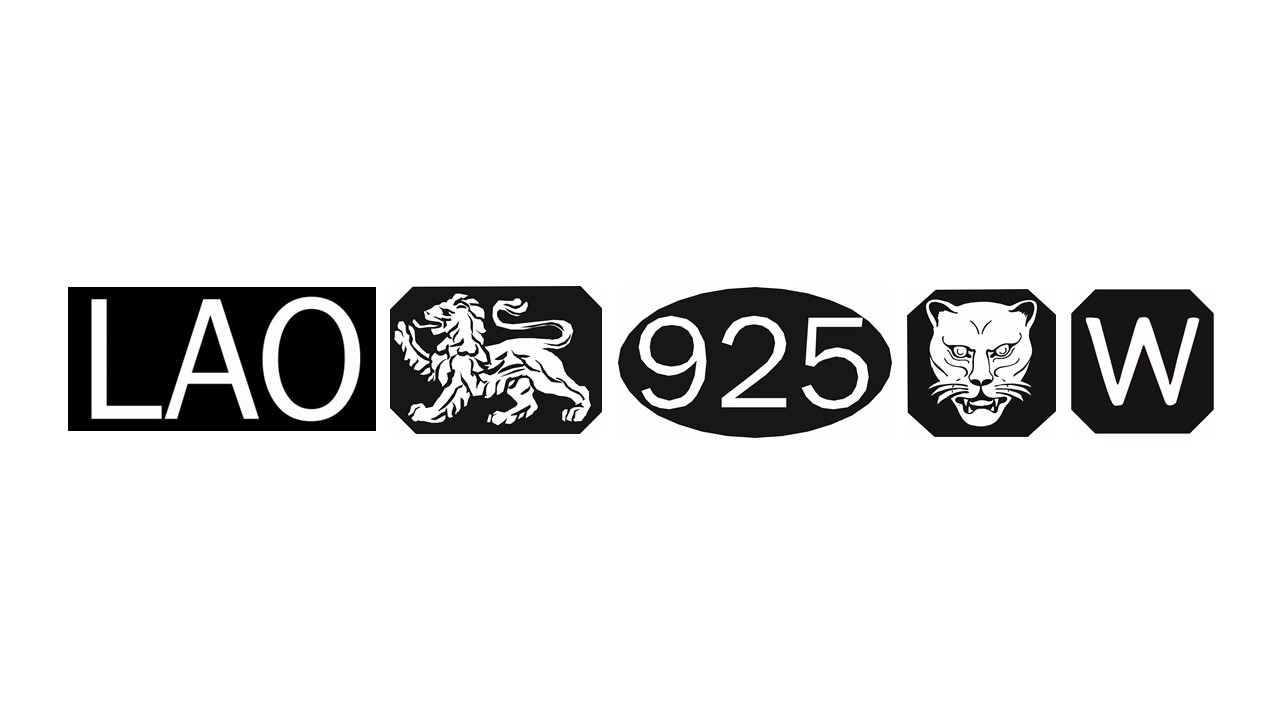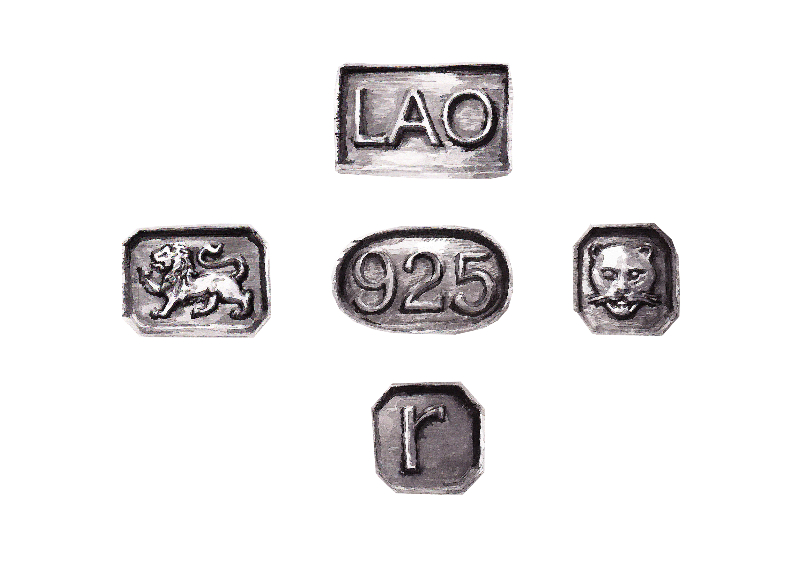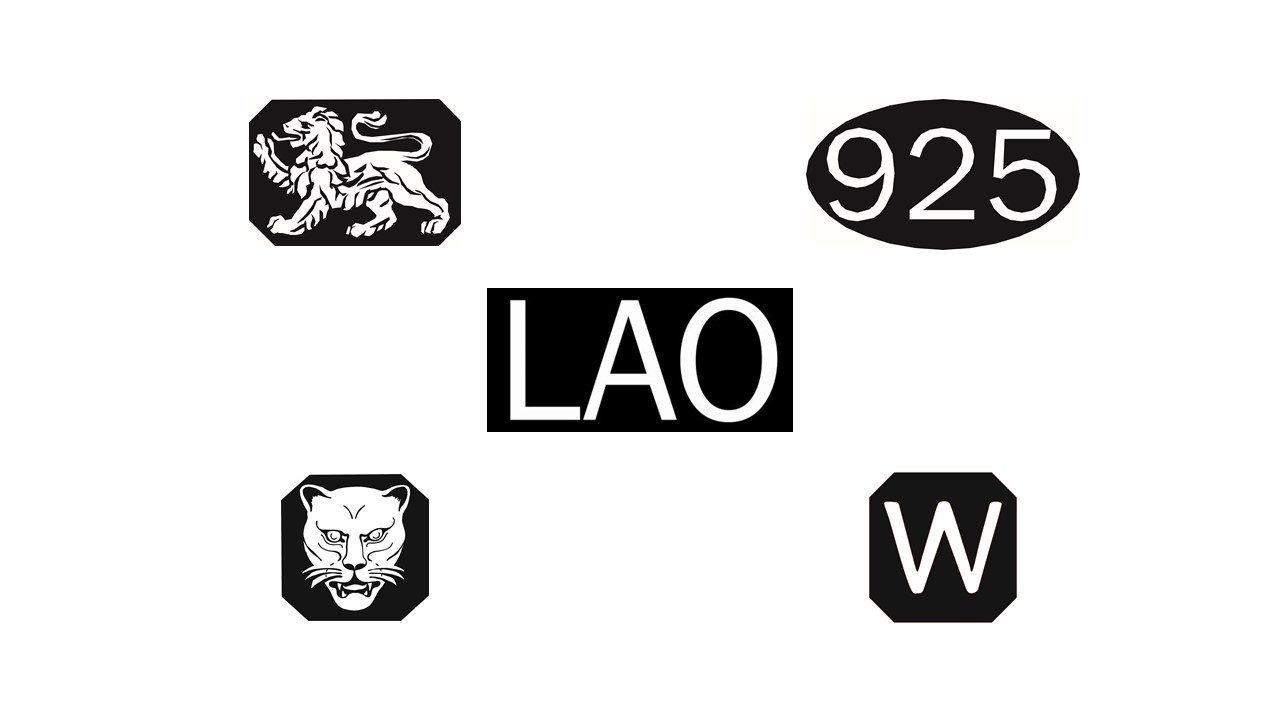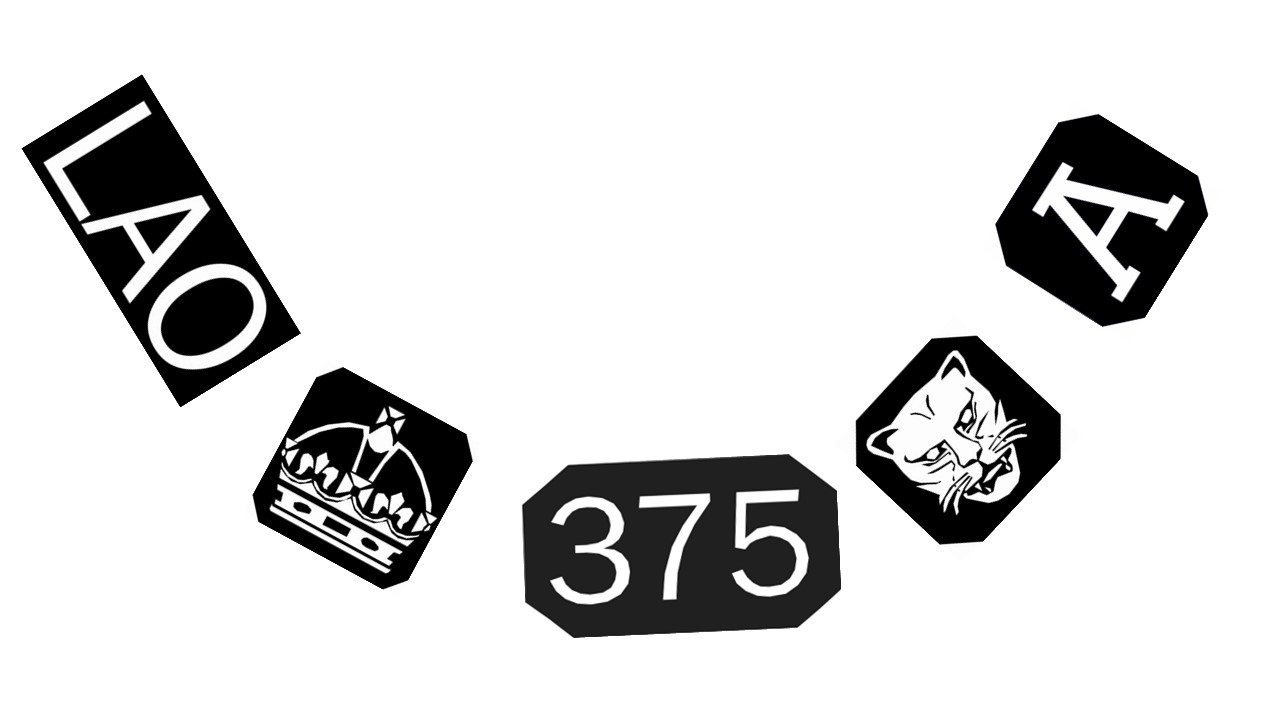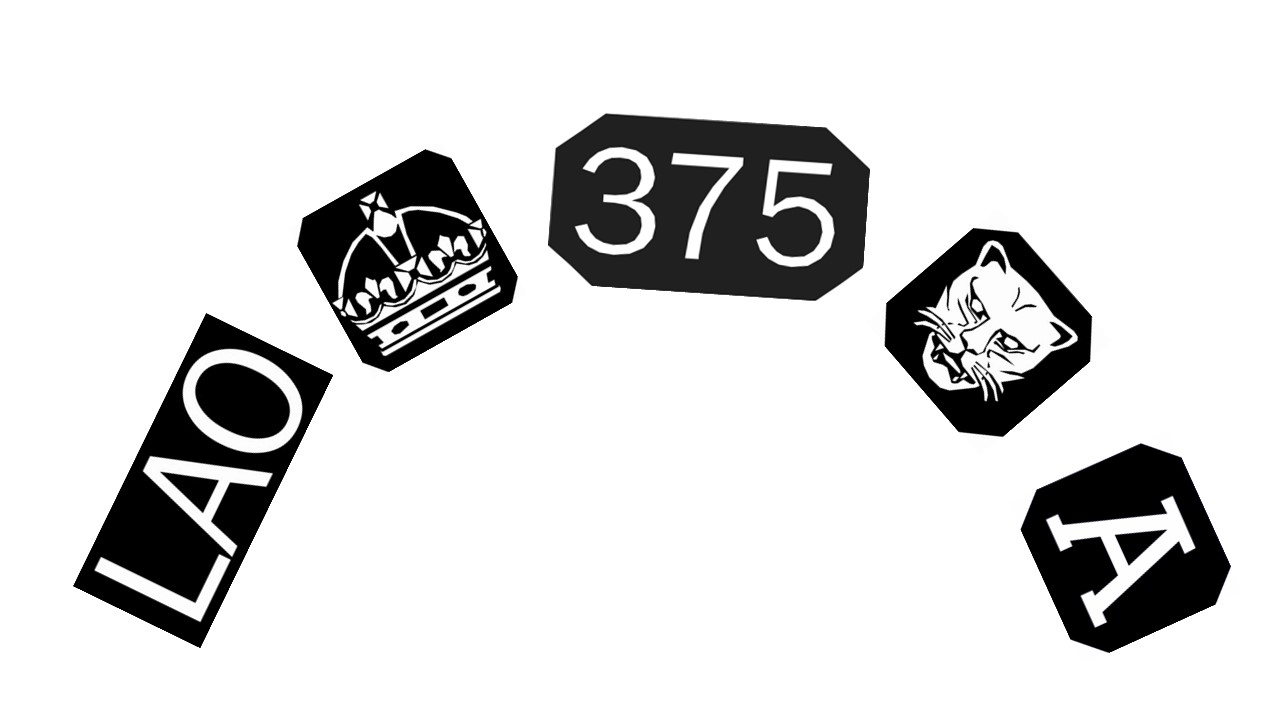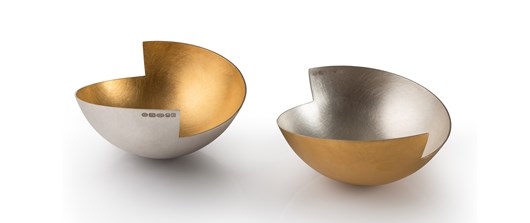
What is a Hallmark?
- Is a set of component marks applied to articles of the precious metals gold, silver, platinum or palladium.
- Means that the article has been independently tested.
- Guarantees that it conforms to all legal standards of purity (fineness).
- Guarantees provenance by telling us where the piece was hallmarked, what the article is made from, and who sent the article for hallmarking.
The standard hallmark formation is horizontal with minimal spacing between the marks.
Other formations of these hallmarks, often called "bespoke" or "display marks" are available.

We apply the Full Traditional UK Hallmark as standard.
What do the symbols of the Full UK Hallmark represent?
Sponsor's Mark
Compulsory mark. The sponsor's mark identifies a person or company registered with an assay office so that items can be submitted for hallmarking under their responsibility. Although this mark is sometimes informally called a "maker's mark", its purpose has always been to establish responsibility rather than identify the manufacturer.
The mark is applied on behalf of manufacturers, commissioners of goods, or third parties and can be applied to items made by others. Items may be submitted for hallmarking by the sponsor or an authorised representative.
The Sponsor's Mark comprises of the initials chosen by that person or company inside a surrounding shield shape. The shield shape varies, and a minimum of two, and maximum of five initials must be included.
Every one is unique.
When you register with us, you join a legacy of makers stretching back centuries. Register here.

LAO stands for London Assay Office
Traditional Fineness Symbol
The traditional fineness symbol is an optional part of the hallmark but applied as standard at the Goldsmiths' Company Assay Office.

Left to right: Sterling silver, Britannia silver, gold, palladium, platinum
Millesimal Fineness Mark
Compulsory mark. This mark tells you how fine, or what quality, the metal is, as well as indicating the metal type. This numerical format was made compulsory in 1999 and shows the precious metal content of the article, expressed in parts per thousand. We mark a piece to the lowest standard of precious metal, so it guarantees that the quality of the whole article is no less than the fineness indicated.
The shape of the surrounding shield indicates metal type.
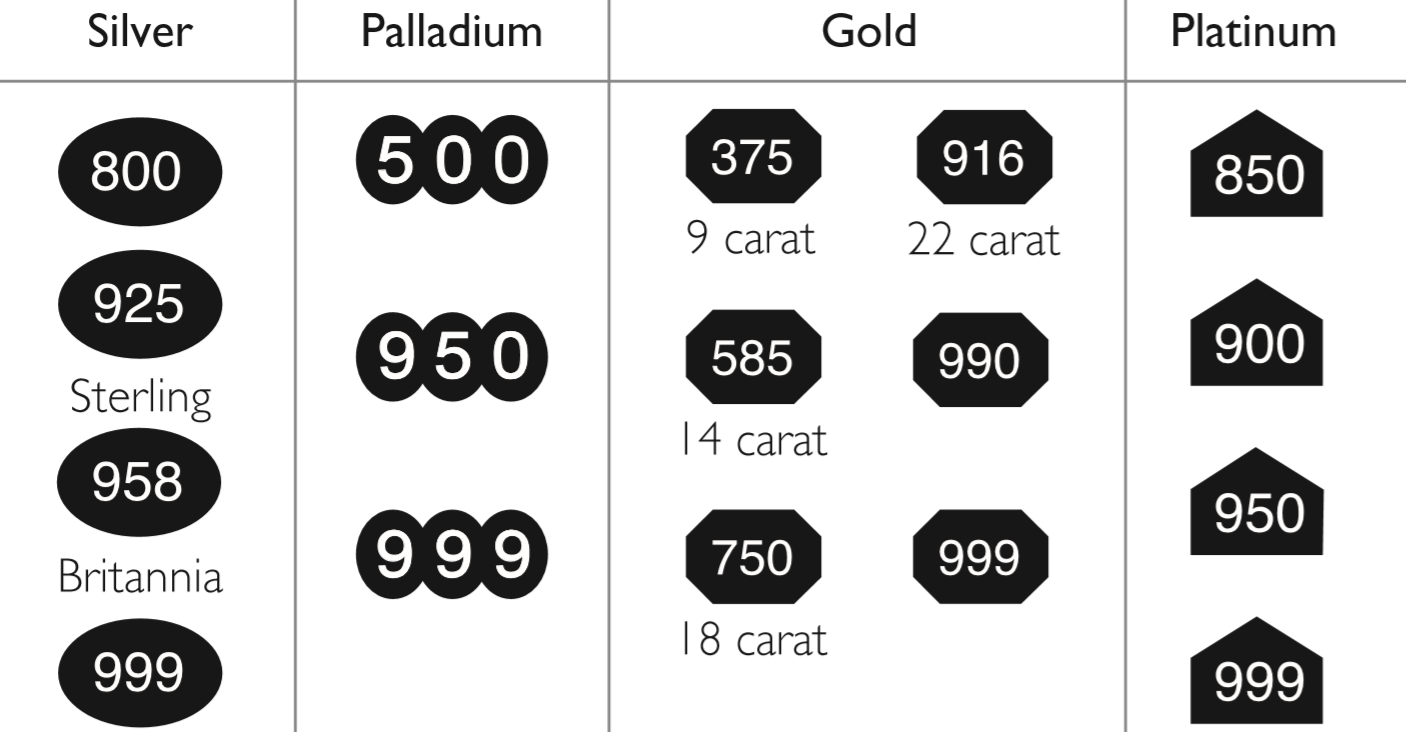
Fineness marks recognised in the UK
Assay Office Mark
Compulsory mark. This mark tells you which Assay Office tested and hallmarked the article.
The historic image of the leopard’s head, the town mark for London, and the mark of the Goldsmiths’ Company Assay Office, continues to be internationally recognised as the stamp of approval and guarantee of quality from the renowned home of hallmarking.
The leopard's head mark of London has been used by some of the finest craftsmen in history, on some of the most prestigious and celebrated works.
Read more about our History & Heritage here, the history of the Goldsmiths' Company here and more about the history of Goldsmiths' Hall here.

Left to right: London, Birmingham, Sheffield, Edinburgh.
Mixed Metal Items
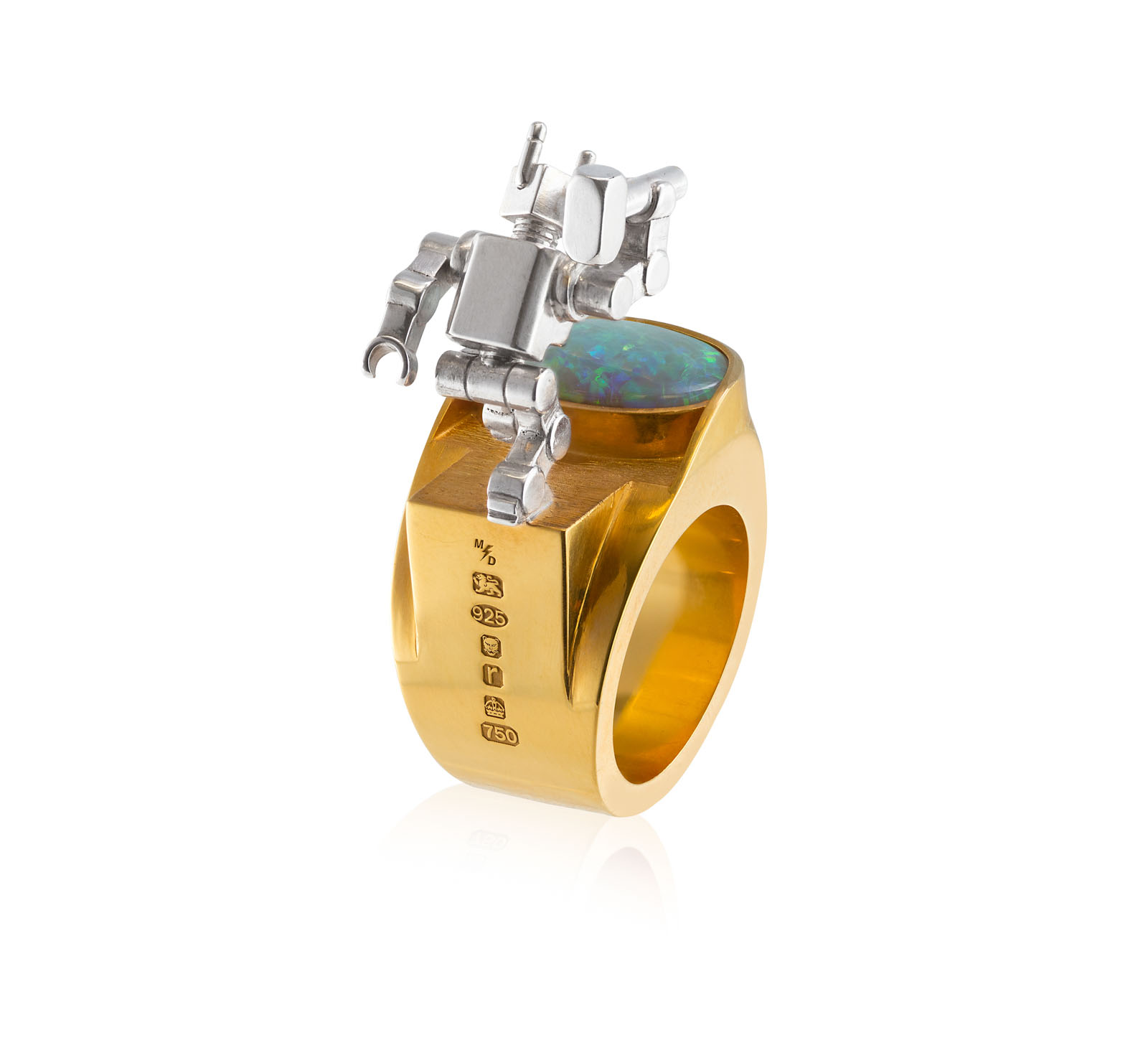
Items are allowed to be made of more than one metal.
Part Marks
Additional marks can be applied to signify the various metals which make up the item.
For more information on the rules of applying mixed metal marks please visit our Mixed Metals page.
We also offer bespoke formations of hallmarks known as Display Marks or Feature Marks.
Display/bespoke marks can be used as a proud feature to complement the item's design. These cost extra to apply due to the time to plot the hallmarks, and mark the article. Our Standard Price List is available in the downloads section here stating the surcharge for these types of marks.
Hallmarks which are spaced, in a different formation other than straight and together, above 0.75mm in height on a ring, or 1.5mm or above in height on any other article are considered bespoke and display/feature marks incurring a surcharge.
Scroll through the carousel below for hallmarking arrangements.

1935 Silver Jubilee

1977 Silver Jubilee

2002 Golden Jubilee

1953 Coronation Mark

2000 Millennium Mark

2012 Diamond Jubilee
Common Control and Convention Marks
The Convention on the Control and Marking of Articles of Precious Metals (known as the Hallmarking Convention) is an international treaty between Contracting States.
The Convention Hallmark can be applied to an item allowing it to be sold between countries who are members of the Convention, negating the need to go through the Assay process again.
More information on Convention and its Hallmarks can be found here.

Left to Right: Sterling Silver/Palladium 950/18ct Gold/Platinum 950/ Type 2 CCM, to be used in conjunction with Millesimal Fineness mark
A Convention Hallmark comprises four marks:
- Sponsor's mark
- Common Control mark
- Millesimal fineness mark
- Assay Office mark
Finenesses recognised under the Convention are:
- Gold - 375, 585, 750, 916, 999.
- Silver - 800, 925, 999.
- Platinum - 850, 900, 950, 999.
- Palladium 500, 950 and 999
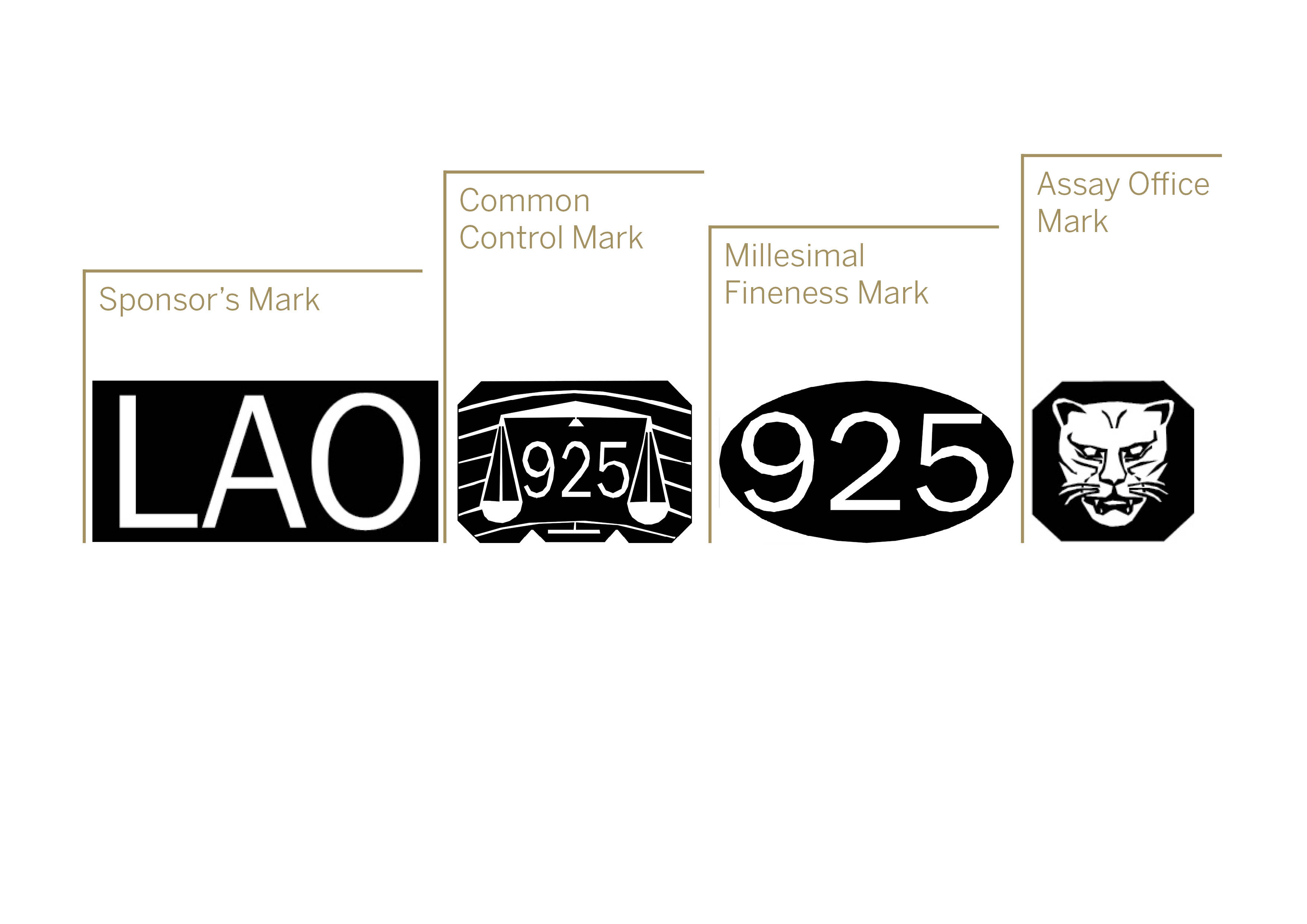
Example of silver convention mark

